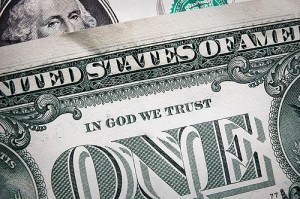 [1]The U.S. Bureau of Economic Analysis (BEA) has just announced that GDP grew at a rate of 2 percent during the last three months. Keynesians [2] like Paul Krugman [3] should be happy, and the so-called “market monetarists” like Scott Sumner should be happy. When we mistake GDP for the economy, a 2 percent quarterly growth rate looks like something to celebrate, at least compared to the previous quarter’s 1.3 percent increase. Alas, as Macbeth found out, not everything is as it seems.
[1]The U.S. Bureau of Economic Analysis (BEA) has just announced that GDP grew at a rate of 2 percent during the last three months. Keynesians [2] like Paul Krugman [3] should be happy, and the so-called “market monetarists” like Scott Sumner should be happy. When we mistake GDP for the economy, a 2 percent quarterly growth rate looks like something to celebrate, at least compared to the previous quarter’s 1.3 percent increase. Alas, as Macbeth found out, not everything is as it seems.
This quarterly release demonstrates the danger of looking to aggregate macroeconomic statistics as a guide for how an economy performs. To better understand how the economy changed during the past quarter, we must (as is always the case) drill deeper into the numbers. It turns out that the deeper we go, the less rosy things appear [4].
The main reason GDP increased at a rate larger than forecast was a large increase in government spending [5]. As hard to believe as it may be, government spending’s contribution to real GDP had actually decreased since the second quarter of 2010. Anyone who understands the economic consequences of government spending knows that this was a good trend if we want to promote long-term economic expansion [6].
Alas, this trend underwent a dramatic reversal over the past three months. Real federal government expenditures increased 9.6 percent. National defense spending alone increased 13 percent over the third quarter. These increases at the national level contributed to an overall increase in all government spending (federal, state, and local) of 3.7 percent. Government spending is what drove the increase in real GDP [7].
Unfortunately, we cannot rely on government spending to generate sustainable economic expansion [8]. The economy is not a machine that is ailing from a dead battery. Yet modern macroeconomists and policymakers often talk and act like it is. They speak of “jump-starting” the economy with a little government spending or monetary inflation [9] or both. Such actions, however, do not generate real wealth. They surely do cause a redistribution of wealth [10], benefiting some while harming others, but they do not provide any general social benefit [11]. Neither government spending nor monetary inflation results in more production of more goods that are able to satisfy the subjective ends of people in our social economy.
Economic expansion and development is the happy consequence of people participating in an extensive market division of labor, made possible by the accumulation of capital that is wisely invested and directed by entrepreneurs [12]. Capital accumulation and technological innovation, therefore, are vital for sustaining economic progress because they allow workers and producers to be more productive. Increases in productivity yield higher real wages and a more prosperous standard of living. Both capital accumulation and technological advance, however, require funding by voluntary savings and investment [13]. Without sufficient saving and investment, our stock and quality of capital goods cannot even be maintained, let alone increase.
Sadly, third quarter investment numbers are nothing to be excited about. Gross private domestic investment increased at an anemic 0.5 percent. Net Private Domestic Business Investment—the amount of investment that we could reasonably argue results in capital accumulation—declined for the second quarter in a row. These dismal numbers [14] are significant, because, as noted above, it is not government consumption but savings and investment that generate sustainable economic expansion in an economy free enough to utilize it.
Additionally, as the BEA press release reminds us, the third-quarter GDP statistic “is based on source data that are incomplete or subject to further revision by the source agency.” Last quarter’s growth rate was revised downward—twice, from 1.8 percent to 1.3 percent, resulting in one commentator quipping that he hoped there were no more revisions because pretty soon GDP growth for the 2nd quarter would turn negative.
The bottom line is that increases in GDP statistics caused by monetary and fiscal stimulus [15] signals an economic expansion that is more apparent than real. Any economic expansion that does not result from increased voluntary saving and investment cannot be sustained. The minute the government slows the rate of government spending or the Federal Reserve [16] slows the rate of growth in the money supply, the economic lie is exposed and economic law once again asserts its authority. Capital malinvestment and the misallocation of factors of production no longer can be covered over as official statistics catch up with reality.